What is burnout and how to avoid it
Professional burnout is a result of long unresolved job stress and it has become a popular diagnosis recently. Find out if you are at risk and how to avoid it.
Home » Stress & Energy » Stress & Energy. Tracking and reducing stress with Welltory HRV
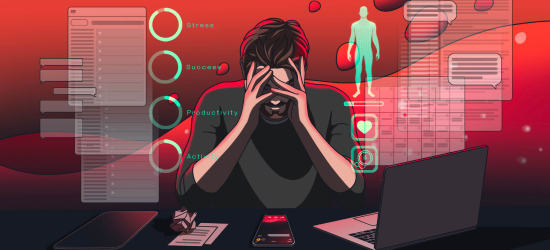
We calculate your level of physical stress and energy based on the evaluation of heart rate variability.
For many, stress can be described as a feeling of being overwhelmed. It is our body’s response to mental or emotional pressure. The U.S. Department of Health and Human Services defines stress as our brain’s and/or body’s response to any demand. It’s important to remember that stress is not always a bad thing. In fact, high-stress levels might be an effect of something exciting going on in your life.
‘Positive’ stress can help you focus on accomplishing tasks, whereas ‘negative’ causes anxiety and decreases your performance. Psychological stress is considered to be one of the most significant health problems of the XXI century. The majority of health researchers agree that mental and emotional pressure is critical to human health. Too much tenseness can make you feel physically and mentally sick, so it’s important to know what happens to your body when you are under stress and how to manage and control it.
We can identify five main types of stress. Chronic stress can be defined as a challenging circumstance that disrupts your daily life for an extended period – for example, being a caregiver to a terminally ill relative or living in poverty. Continuous activation of the stress response causes wear and tear on the body. As a result, physical, emotional, and behavioral symptoms such as addictions can develop affecting your physical and mental health.
| Type | Definition | Potential consequences |
|---|---|---|
| Chronic stress | A challenging circumstance that disrupts daily life for an extended period of time. | Chronic illnesses, accelerated biological aging, obesity, and changes in the neural brain architecture for stress responding. |
| Life events | Episodic events (limited in time) require a significant adjustment, such as getting fired, being in a car crash, moving to a new place, getting married, etc. | Poorer mental health, development and progression of cardiovascular disease. |
| Traumatic life events | Traumatic life events are a subclass of life events in which one’s physical and/or psychological safety is threatened. | Poorer mental health, development and progression of cardiovascular disease. |
| Daily stress | Daily ‘hassle’ such as minor arguments, traffic, work overload, etc. | Poorer mental and physiological health, and elevated inflammation. |
| Acute stress | Short-term exposure to challenging stimuli that evoke a psychological and/or physiological stress response. For example, giving a public speech or being spooked. | Greater cardiovascular reactivity to acute stressors has been prospectively associated with an increased risk of cardiovascular disease. |
Literally everything! But effects of a stressor on an individual can vary and depend on how one perceives reality. Gallup finds that 2020 was officially the most stressful year in recent history, with a record-high 40% of adults worldwide saying they experienced a lot of stress the previous day.
Daily stress and life events cause a great deal of pressure and tenseness, but we all understand and perceive them differently. One of the most ‘popular’ stressors is work. In 2019/2020 an estimated 828,000 workers were affected by work-related stress, depression, or anxiety in the United Kingdom.
Gallup report suggests that in 2020, U.S. and Canadian workforces saw the highest daily stress levels globally — 57 percent. According to stress.org, work-related stress causes 120,000 deaths and results in $190 billion in healthcare costs yearly. So now, let’s look at how the state of mental and emotional strain and suspense affects us.
Emotional pressure (of any kind) leads to a change in the work of regulatory systems of our bodies (the nervous and endocrine systems). Regulatory systems control the work of the whole organism and strive to maintain the optimal level of activity for its livelihood. From this point of view, the stress level is the degree of “tension” of the regulatory systems that occur in response to various stressors. The ability of regulatory systems to become more active (strain) and then return to their original state depends on an individual’s stress resistance. With high-stress resistance, even serious exposure to strain may cause only a tiny increase in stress levels. With low-stress resistance, on the other hand, even minor stressors can impact one’s physical and mental health.
When you are under pressure (physical or emotional), your body releases a mix of stress hormones (adrenaline, noradrenaline, and cortisol) and chemicals that can increase your blood pressure and heart rate. It can also lead to muscle tension, making you feel even more tired and irritated.
The “fight-or-flight” response is a body’s reaction to a stressor that evolved as a survival mechanism. We can deal with a stressor, or we can leave it and run away from it. During the stress response, the heart rate and blood pressure rise, breathing quickens, and muscles tighten ready to act. Your body is prepared to protect itself. Cortisol, which sets our “fight-or-flight” response and the entire acute stress response system, is an evolutionary design. It enables mammals to react quickly to life-threatening situations. However, the human body can also overreact to stressors that don’t threaten one’s life. The stressor can be a family matter, a long queue when you are in a rush, work pressure, and not necessarily a saber-toothed tiger that frightened our ancestors.
Repeated activation of this stress response harms the body. Research shows that chronic stress contributes to high blood pressure and irregular heartbeat, promotes artery-clogging deposits, and causes anxiety, depression, and addictions.
Stress affects all systems of the body, such as the cardiovascular, endocrine, musculoskeletal, respiratory, gastrointestinal, nervous, and reproductive systems, including loss of sexual desire. In order to prevent health complications associated with stress, we need to learn how to detect and manage it.
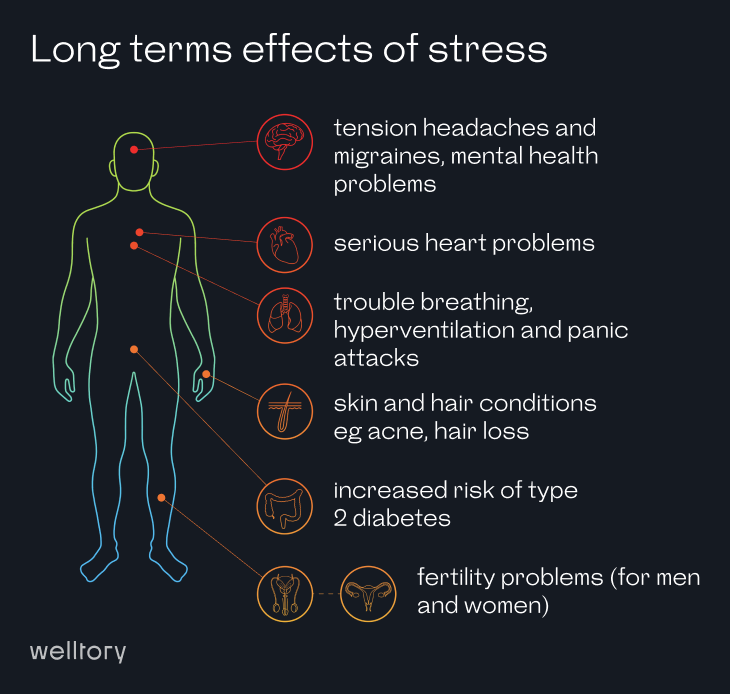
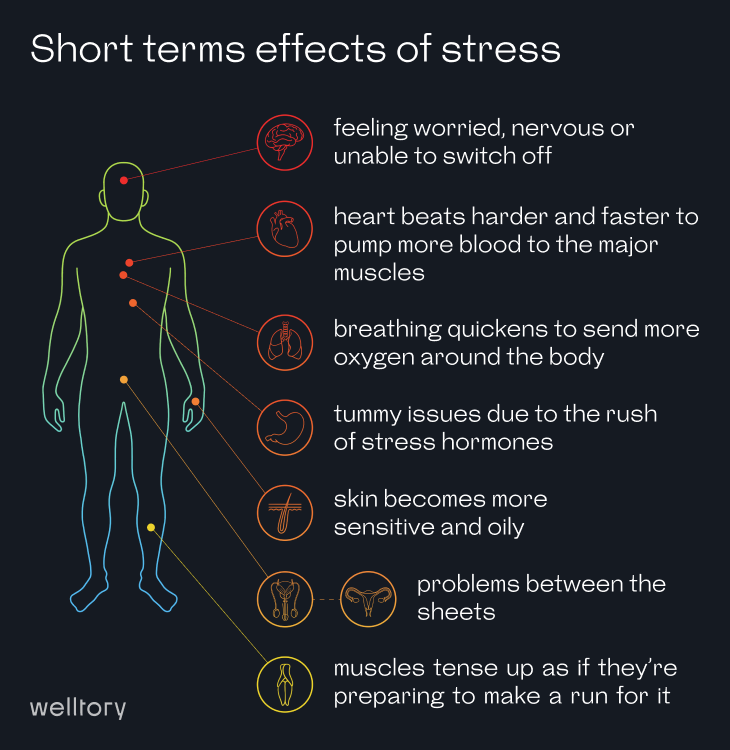
Excess amounts of cortisol can affect the normal biochemical functioning of the male reproductive system and chronic stress can negatively impact sperm production. When it comes to the female body, high levels of stress can lead to absent or irregular menstrual cycles, painful periods and premenstrual syndrome, changes in the cycles, and menopause. Stress can also impact a woman’s ability to conceive, the health of the pregnancy, and the postpartum journey.
Decades of research suggest that growing cardiovascular reactivity and delayed recovery to acute stressors are prospectively associated with increased cardiovascular disease risk. Moreover, there is an association between stress and the immune system, meaning the body can become vulnerable to infections. Several diseases associated with aging in the United States are mediated, in part, through the immune system.
Stress is not just a general feeling of being tired, anxious, overwhelmed, or excited. Instead, it’s a physiological phenomenon that can be measured, observed, and, most importantly, managed.
Diagnosis of stress is very complex and depends on many factors. The use of questionnaires, biochemical measures, and physiologic techniques is the most popular way to diagnose anxiety. However, these methods are subject to an error and must be done with medical professionals’ supervision. Moreover, the feeling of stress is very subjective, and, in most cases, only the person experiencing it can determine how severe it feels. If we understand the stress level not as personal perceptions but as the pressure on regulatory systems, then personalization in assessing the measurement result is extremely important.
People, who want to analyze their physiological stress levels, often use the heart rate variability (HRV), which seems to be one of the most popular tools for measuring stress. By analyzing beat-to-beat changes in your heart rate, it is possible to monitor your all-day stress, help your doctor to prepare a recovery plan, and see how well it is working.
The heart generates impulses and beats on its own. Different regulatory systems modify this beat in your body. Their job is to respond to external stressors by speeding up or slowing down the heart rate to help keep your body’s internal environment stable. Therefore, less variability between beats equals higher stress levels, whereas the increase in variability indicates less stress.
However, HRV interpretation isn’t a one-size-fits-all science. It varies widely from one individual to the next and depends on many different factors: time of day, the way your nervous system typically responds to stressful situations, and much more.
Welltory uses the historically established concept of “optimal stress” to characterize the most beneficial state of regulatory systems. This is a state when a small amount of energy is spent on maintaining the body at rest but with the potential to increase energy spending, if necessary.
This “optimal stress” state is characterized by high HRV. High HRV means that our ability to cope with stressors is also high. It signifies a good cardiovascular adaptive response to various endogenous and exogenous factors.
The deviations of optimal stress are high, extremely high, and low levels of stress. If a deviation leads to increased tension of the regulatory systems then the stress is higher than optimal. Conversely, if the deviation leads to decreased activity of regulatory systems, then this stress is below optimal.
Heart rate variability is an objective and reliable way for non-invasive stress measure and monitoring. Welltory’s personalized heart rate variability algorithms take into account factors like individual traits, nervous system type, current state, and lifestyle to boost your stress resilience.
Heart rate variability (HRV) is a popular tool for stress assessment that many wearable devices such as Apple Watch have learned to measure in the background. Results show heart rate variability and stress significantly correlate with each other, therefore, HRV be used as a stress assessment tool. For example, Welltory’s developers designed a proprietary algorithm that assesses stress levels based on heart rate variability analysis. The app allows users to complete the Perceived Stress Questionnaire and take heart rate variability measurements, either with Apple Watch or smartphone cameras.
The Welltory app possesses the world’s largest collection of heart rate variability measurements. Welltory’s self-learning algorithm adapts to your nervous system type and your heart rate variability normal range.
A significant number of stress management applications (apps) have been developed over the last decade. However, while most stress management apps support users with reflecting on their data, they fail to include adequate feedback that helps users change their behavior to boost stress resilience. It’s also important to remember that applications and smart gadgets are not medical devices and intended to diagnose, treat or prevent a disease or medical condition. Therefore, you have to consult with a doctor if your physical and/or mental health worries you.
Your stress levels can be measured and recorded on your phone, making it for your to track wellness and look after yourself. You can use a smart watch with a heart rate sensor such as Apple, Samsung, Garmin, Fitbit, and others or a phone with a heart rate sensor. Also you can use your camera to do a measurement by placing the tip of your index finger on the iPhone’s camera while using one of the apple watch stress apps.
Ideally, you should be looking for an app that supports you in identifying what your stress levels are, how they change over time, and what they can depend on. Importantly, your ideal stress management app should focus on stress management (not just stress tracking) and help you to reflect on collected data and motivate or remind you to take action. In this sense, Welltory can become your AI coach to get you data-driven advice to achieve well-being and better health metrics and help your doctor track the effectiveness of a treatment if prescribed.
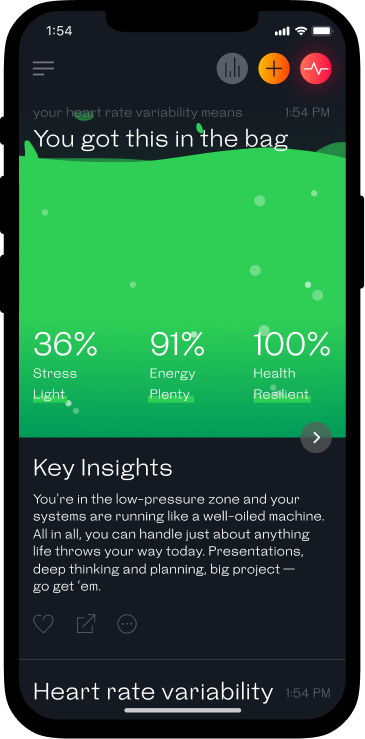
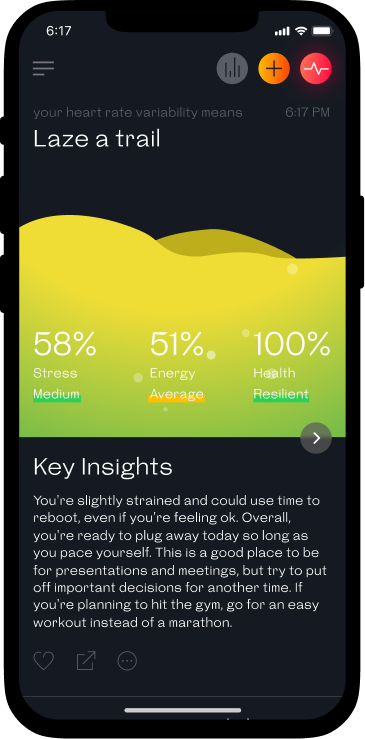
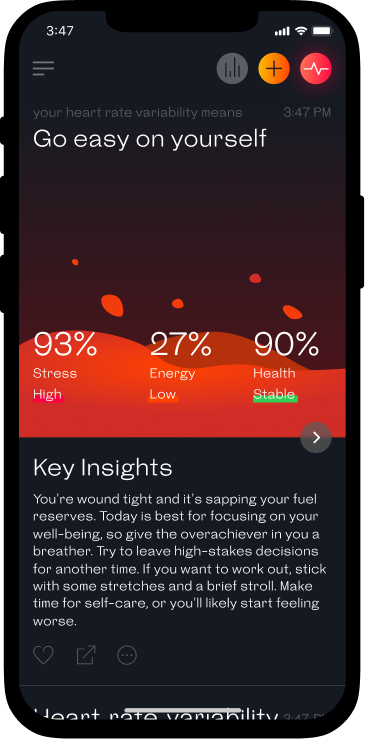
Stress has multiple effects on all the systems in your body. All of them can suffer from it, and each has its unique response. Physiological responses include immune, autonomic, neuroendocrine, and neural changes related to stressor exposure.
Tracking HRV may be a great tool to motivate behavioral changes for some users and create more awareness of how one lives and thinks. It can help you to see how your behavior affects your nervous system and stress & energy levels. Tracking HRV obviously can’t help us avoid stress, but it can help us understand how to respond to stressors more healthily.
We all cope with pressure differently, and there are multiple techniques and methods to deal with stress or anxiety. If you feel overwhelmed, and notice symptoms that might be stress-related, your first step should be talking to a doctor, especially if you started using alcohol or drugs to deal with stress. A medical professional can offer advice and refer you to a therapist for further observation.
In stressful situations, take a deep breath and try to find small things you can control. Learn to find time for yourself to promote your wellbeing and learn your body awareness. You can measure your stress level with Welltory and see how daily choices you make affect your wellbeing to try and get them under control.
Daily stress management techniques include practices such as yoga and other physical activities such as Tai Chi. Traditional meditation, mindfulness, and cognitive-behavioral therapy have also established benefits. However, many of these techniques are not suitable for your daily social environments (we don’t expect you to practice yoga in the middle of a stressful meeting at work). A smart device-based stress management app may be a solution. Welltory is an individualized application that will consider your biofeedback such as HRV and blood pressure and can offer you breathing exercises and helpful tips to eliminate the effects of stress.
Welltory Team, 23 Dec. 2021

Professional burnout is a result of long unresolved job stress and it has become a popular diagnosis recently. Find out if you are at risk and how to avoid it.

77% of our users experience fatigue, and the main reason is lack balance between stress and recovery. Learn to manage your energy and avoid fatigue.

85% of us experience stress on a daily basis. Find out is stress always bad, what causes it and how to avoid chronic stress.
 App Store
App Store
 Google Play
Google Play
 Huawei AppGallery
Huawei AppGallery
 Galaxy Store
Galaxy Store



